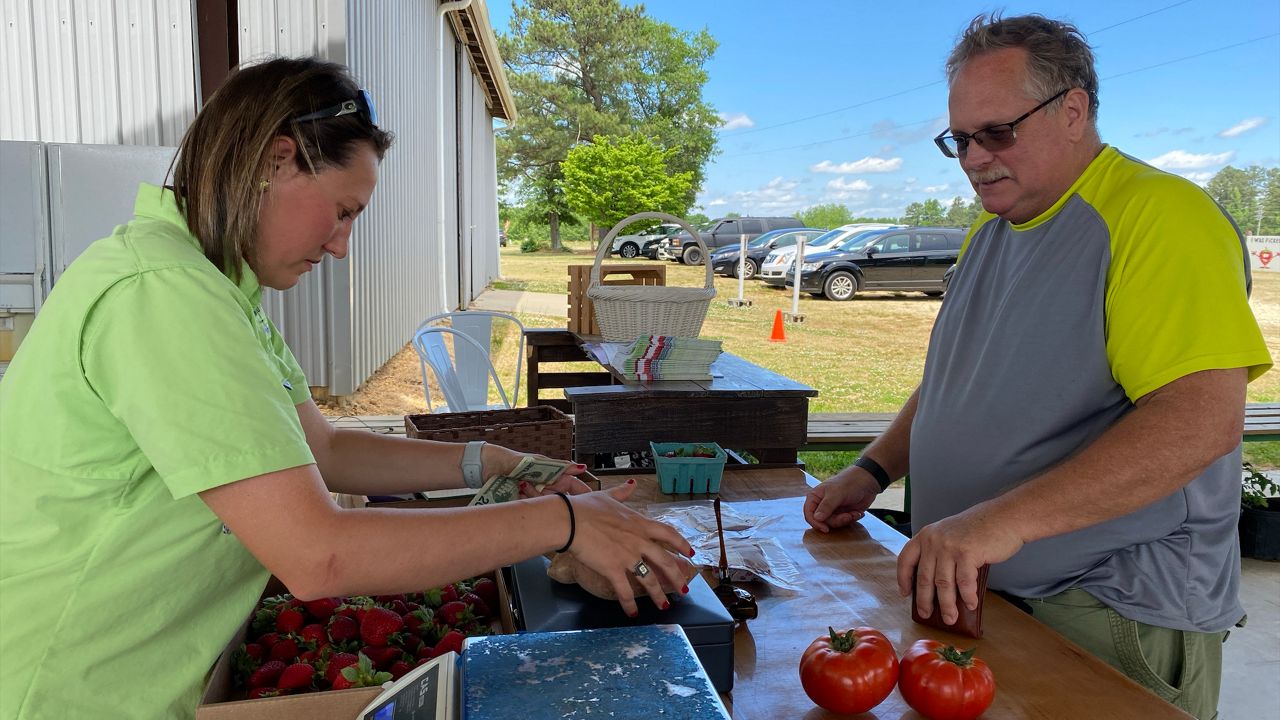JOHNSTON COUNTY, N.C. — A farmer helping to plan future land use says this county's growth can be positive, but it has to be managed.
Michelle Pace Davis' farm encapsulates the changes Johnston County has faced in recent years.
Until a few years ago, her family grew tobacco and row crops on about 250 acres, all while renting out still more land.
Now, she focuses on pick-your-own produce on about half as much land, along with some livestock for meat sales. Her farm is best known these days for its strawberry fields, where families come to pick all the berries they want.

“Being able to have more rooftops has more families being able to come and visit our farm, and seeing the kids with all the strawberry juicy grins and juice running down their face, it makes it worth it,” she said.
Meanwhile, subdivisions have slowly encircled her land. Developers are building a new one right next door.
Census data shows the population of Johnston County, which borders booming Wake County, grew by nearly 25% during the 2010s. Now home to roughly 209,000 people, Johnston County could be reclassified as an urban county after final 2020 census data becomes available.
To help slow things down, the board of commissioners voted in September to increase the minimum size of a lot for a single-family home in unincorporated areas of the county from 28,500 square feet to 30,000 square feet.
Presiding commissioner Chad Stewart said this will mean less dense growth in those areas while officials draft a long-term land use plan to be completed sometime next year. The lot density rule does not apply in incorporated towns such as Clayton or Smithfield.
Davis serves on the committee working on that plan. She said any decisions regarding density impact the ability of utilities, emergency services, roads and other infrastructure items to properly serve the population.
School officials already are asking for funding to pay for additional school buildings. Davis said the county could need as many as five. Stewart said this would require a new bond issue either next year or in 2024.
Davis said Johnston County's growth has been a good thing overall, though the pace caught leaders somewhat flat-footed.
She said as the committee continues its work, she and the other members will have to find a way to maintain the quality of life that draws people to the county without overwhelming their infrastructure or causing people to move away because things get too dense for their liking.
Already there is a noticeable population difference between portions of Johnston County that lie west of Interstate 95, closer to Raleigh, and those to the east.
“In future planning of the county, do you want east of 95 to resemble west of 95, or do you still want to maintain that farmland and that rural way of life that people think of as Johnston County?” she said.
